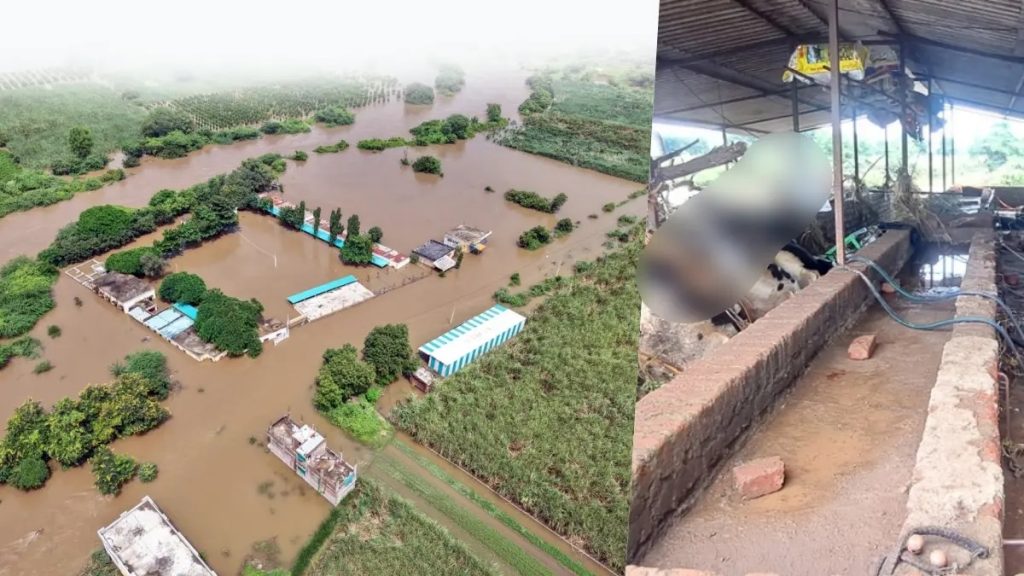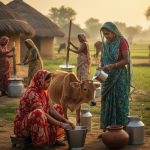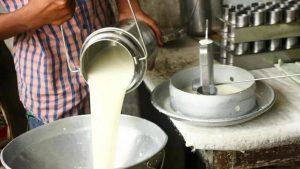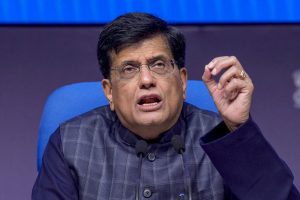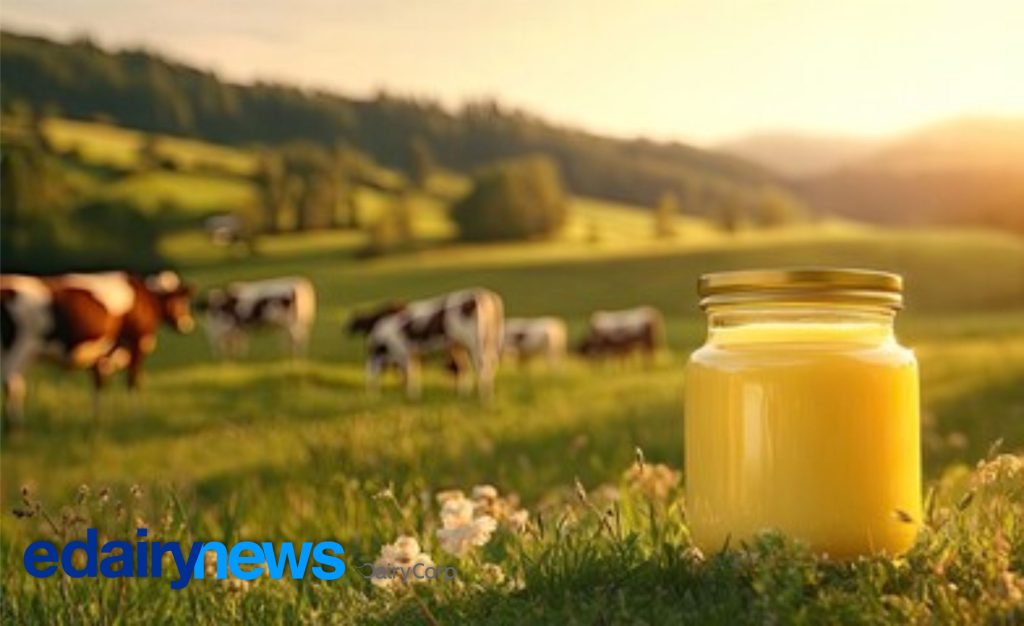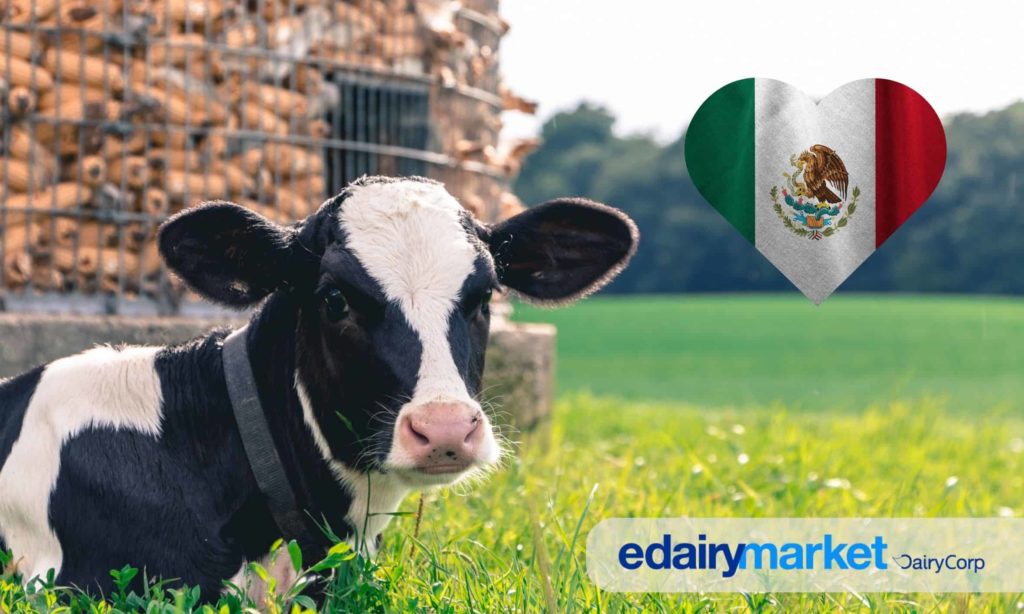
Catastrophic Maharashtra floods expose critical policy gaps, leaving prosperous dairy enterprises devastated by inadequate NDRF compensation.
The torrential floods that recently ravaged the Marathwada region of Maharashtra have caused devastating losses that go far beyond damaged crops, directly targeting the core of the regional dairy sector. A stark case study is Shriram Datkhile, a 55–year–old farmer from Telgaon Pimpalgaon village in Dharashiv district, who lost the entire basis of his prosperous dairy farming business in a matter of minutes. The sudden influx of water from the Banganga River on the night of September 23 gave him and his family only seven to eight minutes to evacuate, leaving no time to save their livestock.
Datkhile‘s losses, which represent a significant blow to local dairy economics, included 40 cows and 20 goats, a herd that was painstakingly built up over years. His family had previously generated substantial income, reporting milk sales worth ₹3.5 lakh per month, maintaining a healthy profit margin of nearly 40%. The total financial damage, including the loss of high-value cattle—each estimated to be worth around ₹1.25 lakh—plus the destroyed shed, is tallied at a crippling ₹60 lakh, effectively wiping out his livelihood. A key concern for the international dairy community and local agribusiness stakeholders is the inadequacy of government relief mechanisms. According to Datkhile‘s son, Pravin, the compensation provided under National Disaster Response Force (NDRF) norms is severely restricted: compensation is allowed for a maximum of only three animals, at a rate of just ₹37,500 per cattle. This policy gap means that commercial-scale dairy enterprises, which typically maintain large herds to ensure profitability, are left facing near-total financial ruin, as current aid falls dramatically short of covering their losses.
The humanitarian fallout from these financial setbacks is severe. The helpline established by the farmers’ NGO, Shivaar, received 274 distress calls on its inaugural day, particularly from the rain-battered Marathwada region. Shockingly, the NGO‘s founder, Vinayak Hegana, claimed that 83 of these farmers were contemplating suicide due to overwhelming debt and the inadequacy of government aid. This reflects a deep-seated crisis of confidence in the systems meant to support rural producers during catastrophic events.
Furthermore, the crisis is compounded by a systemic lack of livestock protection. Farmers reported to the helpline that cattle were not being insured due to the ongoing threat posed by lumpy skin disease. This lack of insurance combined with inadequate government compensation, as highlighted by another farmer in Nanded who lost 40 buffaloes and 15 cows—a loss also deemed unrecoverable by current aid—exposes a critical need for robust agribusiness risk management and more flexible disaster response policies in the sector.
Source: Read the full ground report on livestock losses and rural distress from The Week.
You can now read the most important #news on #eDairyNews #Whatsapp channels!!!
🇮🇳 eDairy News ÍNDIA: https://whatsapp.com/channel/0029VaPidCcGpLHImBQk6x1F
